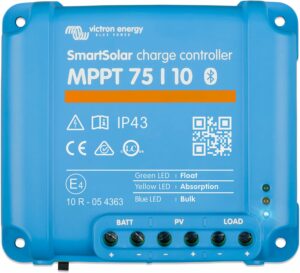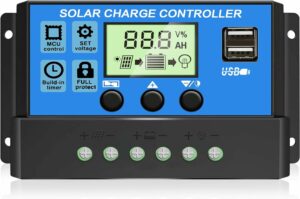RV Solar Panel Charge Regulator
Introduction
RV solar panels have become a popular and eco-friendly solution for powering recreational vehicles, providing an alternative to traditional energy sources.
As more RV enthusiasts embrace sustainable living, integrating solar panels into RVs has gained significant momentum.
Provo Green Products embodies a beacon of trust in sustainable discoveries, offering choices that enhance your life and leave a positive mark on our planet.
Leveraging extensive expertise in manufacturing, construction, and various trades, we provide a solid foundation for sustainable living.
Our meticulous research process guarantees that our information about each product is precise and current, allowing you to make informed decisions.
Whether your interest lies in solar products, electric bikes, or other eco-friendly alternatives, our commitment to credibility ensures you have access to dependable insights, guiding your journey toward a more sustainable lifestyle.
Provo Green Products is your go-to destination for finding the right green products for your lifestyle.
Disclosure: We may earn a small commission if you click on one of our links. This will not affect the pricing of the product whatsoever.
Understanding Solar Charge Regulators
Explanation of Solar Charge Regulators:
Solar charge regulators act as intelligent traffic controllers for the electricity generated by solar panels.
Their primary function is to regulate the voltage and current from the panels and ensure that the batteries receive an appropriate and safe charge.
This process involves modulating the charge to prevent overcharging, which can lead to reduced battery life, and undercharging, which may limit power availability when needed.
Types of Solar Charge Regulators:
There are two main types of solar charge regulators: PWM (Pulse Width Modulation) and MPPT (Maximum Power Point Tracking).
PWM controllers are cost-effective and work well for smaller solar power systems, while MPPT controllers are more advanced and efficient, particularly in scenarios with varying sunlight conditions.
Understanding the differences between these types is crucial for selecting the right regulator based on the specific needs of an RV solar setup.
Key Features and Functionalities:
Solar charge regulators come with various features to enhance their performance and usability.
These may include LCDs for monitoring system status, temperature compensation to adjust charging parameters based on temperature variations, and various protection mechanisms against over-voltage, short circuits, and reverse current flow.
Exploring these features enables RV owners to make informed decisions when choosing a solar charge regulator for their setup.
In essence, comprehending the intricacies of solar charge regulators is fundamental to optimizing the efficiency and lifespan of an RV’s solar power system.
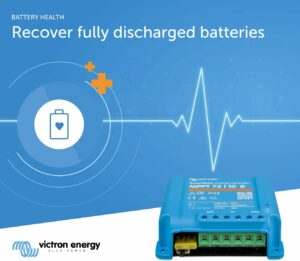
Installation Guide for RV Solar Charge Regulators
Installing solar charge regulators in an RV solar power system is a critical step to ensure the efficient and safe operation of the entire setup.
Here’s a comprehensive guide to help RV enthusiasts navigate the installation process:
Step-by-Step Instructions:
Gather Necessary Tools and Equipment:
- Before installing, ensure you have all the required tools and equipment. This may include a screwdriver, wire strippers, crimping tools, a multimeter, and the solar charge regulator.
Locate a Suitable Installation Spot:
- Identify a suitable location for mounting the solar charge regulator. It should be easily accessible, well-ventilated, and protected from extreme temperatures and moisture. The RV’s electrical compartment or a dedicated space near the battery bank are common locations.
Connect Solar Panels to the Regulator:
- Begin by connecting the solar panels to the solar charge regulator. Follow the manufacturer’s guidelines for proper wiring, ensuring the positive and negative terminals are correctly matched. Use appropriate wiring and connectors based on the system’s voltage and current.
Connect the Regulator to the Battery Bank:
- Establish the connection between the solar charge regulator and the RV’s battery bank. Again, adhere to the manufacturer’s instructions, ensuring secure and properly insulated connections. Take note of the regulator’s voltage settings and adjust them according to your battery type.
Ground the System:
- Grounding is a crucial safety measure. Connect the solar charge regulator’s grounding terminal to the RV’s chassis or a dedicated grounding point. This helps dissipate excess electrical energy and minimizes the risk of electrical issues.
Install Temperature Sensors (if applicable):
- Some solar charge regulators come with temperature sensors to adjust charging parameters based on temperature variations. If your regulator includes this feature, install the temperature sensors according to the instructions.
Secure and Organize Wiring:
- Neatly secure and organize all wiring to prevent potential hazards or damage during travel. Use cable ties or clips to keep the wiring tidy and protected.
Safety Precautions:
- Ensure the RV’s electrical system is turned off before starting the installation.
- Take precautions to avoid electric shocks, such as wearing insulated gloves and working in a dry environment.
- Double-check all connections before turning the system on to prevent potential damage to the charge regulator or other components.
By following these step-by-step instructions and safety precautions, RV owners can confidently install solar charge regulators, contributing to the seamless integration of solar power into their mobile lifestyle.
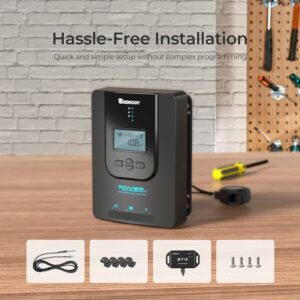
Troubleshooting Common Issues
Despite the reliability of RV solar power systems, occasional issues may arise that affect the performance of solar charge regulators.
Understanding and troubleshooting these common problems is essential for maintaining a seamless and efficient energy supply.
Let’s explore some typical issues and their solutions:
- Insufficient Charging:
- Possible Causes:
- Dirty or shaded solar panels.
- Loose or damaged wiring connections.
- Inadequate sunlight conditions.
- Troubleshooting Steps:
- Clean solar panels regularly.
- Inspect and secure all wiring connections.
- Position the RV to maximize exposure to sunlight.
- Overcharging Batteries:
- Possible Causes:
- Incorrect voltage settings on the charge regulator.
- Malfunctioning regulator.
- Temperature-related fluctuations.
- Troubleshooting Steps:
- Adjust the voltage settings based on battery type.
- Test the regulator with a multimeter.
- Install temperature sensors for better regulation.
- Regulator Display Issues:
- Possible Causes:
- Faulty display unit.
- Wiring issues.
- Power supply problems.
- Troubleshooting Steps:
- Check for loose or damaged wiring.
- Test the power supply to the display.
- Replace the display unit if necessary.
- Unexpected System Shutdown:
- Possible Causes:
- Overheating of the regulator.
- Short circuits in the wiring.
- Internal component failure.
- Troubleshooting Steps:
- Ensure proper ventilation for the regulator.
- Inspect wiring for signs of damage.
- Consult the manufacturer or seek professional assistance.
- Inconsistent Output:
- Possible Causes:
- Faulty solar panels.
- Aging batteries.
- Wiring issues.
- Troubleshooting Steps:
- Test each solar panel individually.
- Check battery health and replace if necessary.
- Inspect and repair or replace damaged wiring.
- Communication Issues with Battery Monitor Systems:
- Possible Causes:
- Incorrect wiring between the regulator and battery monitor.
- Compatibility issues.
- Troubleshooting Steps:
- Verify the correct wiring connections.
- Ensure the charge regulator and battery monitor are compatible.
When to Seek Professional Assistance:
If troubleshooting efforts do not resolve the issues, or if you are uncomfortable dealing with electrical components, it’s best to seek professional assistance.
Certified RV technicians or solar power system specialists can conduct a thorough diagnosis and address any underlying problems to ensure the continued reliability of your RV solar setup.
By systematically addressing common issues and regularly maintaining the system, RV enthusiasts can enjoy the full benefits of solar power during their travels.
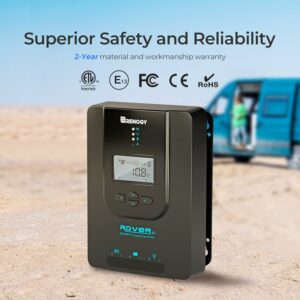
Upgrading Your RV Solar Charging System
As solar technology advances, upgrading your RV’s solar charging system can enhance energy efficiency, increase power storage, and improve overall performance.
Here’s a comprehensive guide to help RV enthusiasts navigate the process of upgrading their solar setups:
- Overview of the Latest Advancements:
Introduction to High-Efficiency Solar Panels:
- Explore the latest advancements in solar panel technology, such as high-efficiency panels with improved conversion rates. Upgrading these panels can boost energy production and maximize the use of available sunlight.
MPPT Charge Controllers:
- Consider upgrading to Maximum Power Point Tracking (MPPT) charge controllers. These controllers optimize energy harvesting by adjusting to varying light conditions, ensuring the system operates at peak efficiency.
Assessing Your Current System:
Evaluate Solar Panel Capacity:
- Determine the capacity of your existing solar panels and assess whether upgrading to higher-capacity panels is feasible. This can significantly increase the energy output of your system.
Check Battery Capacity and Health:
- Evaluate the state of your RV’s battery bank. If your batteries are aging or insufficient for your power needs, upgrading to higher-capacity or lithium-ion batteries can enhance energy storage and lifespan.Considerations for Upgrading:
Budgetary Considerations:
- Establish a budget for the upgrade, considering the costs of new solar panels, charge controllers, and additional components. While upgrades can be a long-term investment, balancing performance and cost is essential.
System Compatibility:
- Ensure that the new components are compatible with your existing system. Check voltage, current requirements, and communication protocols between components like charge controllers and inverters.
Benefits of Upgrading:
Increased Energy Production:
- High-efficiency solar panels and advanced charge controllers can increase energy production, especially in varying weather conditions. This ensures a more reliable power supply during your travels.
Extended Battery Lifespan:
- Upgrading to modern battery technologies, such as lithium-ion, can extend the lifespan of your battery bank. These batteries are more efficient, lighter, and have a longer cycle life than traditional lead-acid batteries.
Smart Monitoring and Control:
- Explore upgraded monitoring and control systems that provide real-time data on your solar power system’s performance. Smart features can enhance user experience and facilitate better energy management.
Installation Process for Upgrades:
Follow Manufacturer Guidelines:
- Adhere to the manufacturer’s guidelines for installing new components. This ensures seamless integration of upgraded elements into your existing solar power system.
Professional Assistance if Needed:
- Consider seeking assistance from certified RV technicians or solar power system experts for complex upgrades or discomfort with the installation process.
By carefully considering the latest advancements, assessing your current system, and planning the upgrade, you can enjoy the benefits of a more efficient and reliable RV solar charging system for your future travels.
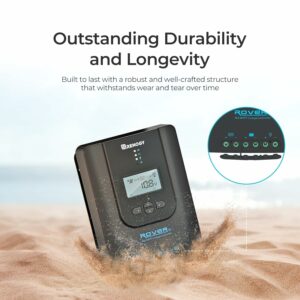
Conclusion
Upgrading your RV’s solar charging system presents a pathway to harnessing cutting-edge technology for enhanced energy efficiency and reliable power on the go.
With advancements like high-efficiency solar panels and MPPT charge controllers, coupled with careful consideration of your current system and budget, you can optimize energy production and extend the lifespan of your battery bank.
Whether you’re a seasoned RV enthusiast or a newcomer to solar power, these upgrades pave the way for a more sustainable and enjoyable mobile lifestyle.
Stay in Touch!
I’am a dedicated entrepreneur with many years of experience and an integrity-driven individual who is highly motivated to succeed. Leveraging extensive expertise in manufacturing, construction, and various trades, we can provide a solid foundation for sustainable living. Our meticulous research process guarantees that our information about each product is precise and current, allowing you to make informed decisions. A deep understanding of business operations empowers me to consistently implement improvements that result in ongoing success. Visit site.

